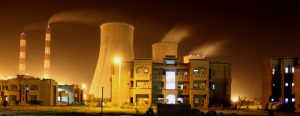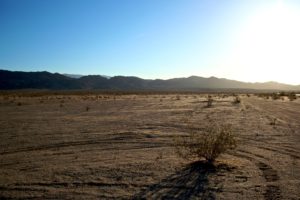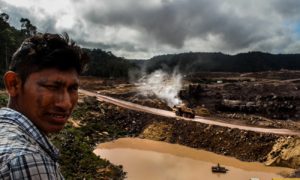Mridula Ramesh’s book, “The Climate Solution: India’s climate-change crisis and what we can do about it”, comes with strong praise from high quarters – from Suresh Prabhu, the Indian minister of Commerce & Industry and Civil Aviation, MS Swaminathan – the man credited with the Green Revolution in India, and Rajendra Singh, known as the “water man of India” among others. It is not difficult to see why. The book is eminently readable, even fast-paced, and does a great job of both presenting data as well as humanising the data with precise and clear anecdotes that give a flavour of both the challenge of the present, and some hope of the future.
“The Climate Solution” is divided into two parts, the first lays out the problems that we face, and what has created them, and explains precisely how they will affect India and Indians. She begins with a personal account of a harrowing takeoff from Chennai airport in 2015 during a torrential downpour – a vision of an altered climate at work.
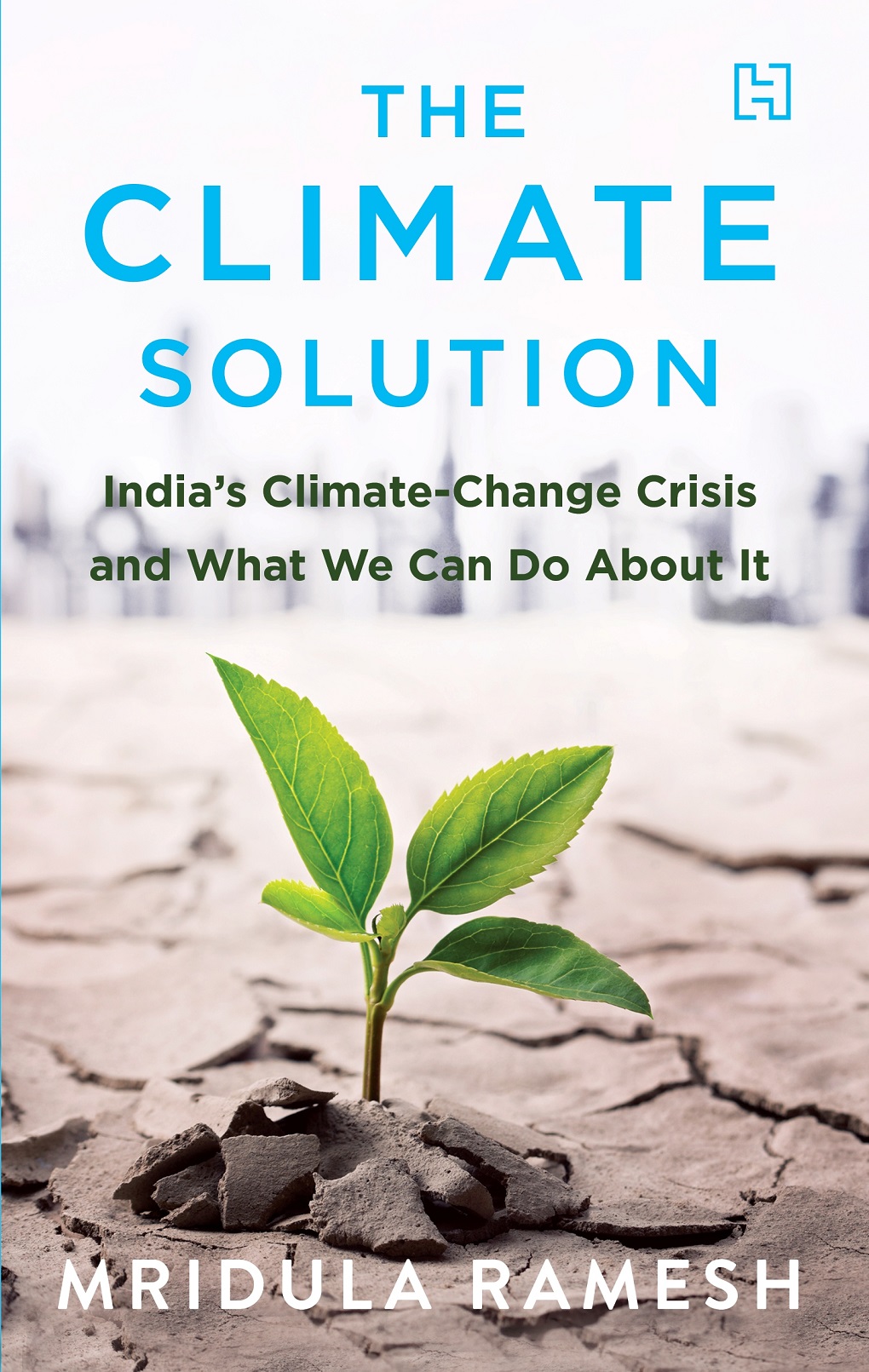
(It has been shown by scientists that the December 2015 deluge in Chennai was not connected to climate change – eds. See Last year’s Chennai deluge not due to climate change)
This is followed by chapters that demonstrate and explain why scientists say the climate is changing, and what that means for our world, presented with clear graphs and data points that show what an accomplished educator Ramesh is. Having been a McKinsey consultant in Silicon Valley before returning to India, Ramesh teaches a postgraduate course on climate change at the Great Lakes Institute of Management. She has written on climate change for a number of Indian publications, and is founder of the Sundaram Climate Institute, which focuses on waste and water solutions and education.
Her experiences are an important part of the book, as she gets down to the details about how climate change will affect India – with chapters on storms, urban impact, droughts and floods, as well as an important chapter on how climate change puts Indian women more at risk. She makes it clear that these problems are exacerbated by development patterns. On floods, she quotes J Srinivasan, Distinguished Scientist at the Divecha Centre for Climate Change, at the Indian Institute of Science, “Land use patterns and air pollution have a greater impact on local climate in India than the increase in greenhouse gases.” She returns to this point when highlighting the impact of climate change on urban areas.
“The number of water bodies in Chennai has fallen from 650 to less than 30 in 2012,” Ramesh writes, “Marshland area has also fallen by 90 per cent. This has effectively destroyed any remaining ‘excess storage’ capacity of the city [to deal with floods].”
See: Mismanaged urbanisation and the destruction of Indian wetlands
The chapter on the impact of climate change on women is particularly important, and scary, reading. Given that rising temperatures and a changing climate is likely to reduce agricultural yields, the impact on women who make up a very large part of the informal sector in agriculture is likely to be severe. Furthermore, with reduced access to water, and greater health problems with “mosquito-borne diseases… set to rise as the climate warms”, the burden on women managing the household will rise. Added to this, other cultural factors may become worse. Ramesh cites a study by Sekhri and Storeygard of more than 500 districts over the last decade which shows “that whenever rains fall by a standard deviation, dowry deaths in the particular district rises by 8 per cent.”
The recent IPCC report made it explicit that if we are to keep the global temperature from rising just below 1.5 degrees Celsius urgent action needs to be taken, or a very high price will be paid. Reading Ramesh’s book clearly shows that a large part of that price will be paid by India’s poor, especially its women. But can anything be done?
This is where the second part of ‘The Climate Solution’ comes in, offering a set of solutions from both international experience as well as Indian experience. Ramesh begins with the story of Israel’s water management – which given the differences in size, wealth per capita, and differences in economy seems an odd choice – that allows her to focus on both technology and management as key answers. She is a fan of technology, suggesting India embrace GMO produce and precision-farming where possible, but her real focus is really on better management. She lays out the problem of farm loans, and the dependence of small farmers on informal loan sharks who lend at rates up to 80%. This lack of financial flexibility severely undercuts the freedom for small farmers to take adaptive measures, and Ramesh focusses on the Jan Dhan (zero balance bank accounts), Aadhaar (India’s biometric based social security scheme), and Mobile (phone) initiative, called the JAM Yojana being championed by the current government as an answer. This, she believes, will help farmers access credit with greater ease, as well as help develop a Universal Basic Income scheme.
The chapter on transport is insightful. She carefully shows how better managed public transport could help ease the time taken to commute as well as radically reduce carbon emissions. She also explains that the challenge has far more to do with public perception of bus transport – which is seen as the choice of the less privileged unlike metro train systems – rather than actual outcomes, giving the example of Zurich’s excellently run public transport system of buses, trams and metro trains. Unfortunately she does not offer a way that this can be transformed, even if her data is very convincing. She makes a strong case for electric vehicles in the public transport system, something that India recently highlighted at the Global Climate Action Summit in San Francisco, so this perception may, hopefully, be changing already.
Her chapter on waste management is possibly her best. She gives a wealth of examples of how good waste management is not only possible, but is creating jobs. The quote that all policy planners will likely read with the most interest is her assessment that, “By managing urban India’s 150,000 tonnes of municipal waste urban India could generate 600,000 to 750,000 jobs while creating a cleaner environment and ensuring dignity and safety for millions.” Given that waste management is currently dominated by the employment on poor pay by ‘ragpickers’ in unsafe and unhealthy environments, and the crying need for jobs, this would be one of the greatest win-wins India could ensure.
Her last chapter, on climate heroes, will also be read with a great deal of interest. Maybe the most interesting story is that of Alwar, a water stressed district in the state of Rajasthan which has recorded some of the highest temperatures in the country. It was here that Rajendra Singh helped re-popularise the traditional johad – crescent shaped earthen dams – and helped revive the Arvari river. The story is detailed, and Singh and the Rajasthani farmers faced a number of challenges, especially in negotiating with local and state authorities, but it is an excellent and heartwarming example of what can be done.
Despite the excellent research, important examples and accessibility of the text, there are some important lacunae. In her chapter emphasising the strife that climate change will bring, Ramesh places a great amount of emphasis on China’s control of the Tibetan plateau with its vast water resources – including the headwaters of the Indus and Brahmaputra – and dam building. While Chinese dam-building has been a concern, it has in fact gone down over recent years within its territory. Additionally the far larger amount of the Brahmaputra’s water drainage basin lies in Indian territory, thus concerns over Chinese ability to manipulate it are often overstated. Secondly, while Ramesh does a very good job of showing what individuals and institutions can do, the biggest actor in the room – the government – is not as thoroughly represented. Big dams and coal find no mention in her checklist of actions at the end of the book. The IPCC pathway to keeping temperature rise below 1.5 degrees C goal requires a goal of cutting coal plants down to near zero by 2050, and the Indian government is still planning on generating about 45% of its electricity by coal in 2048. Thirdly, many of the government solutions, including the focus on the JAM Yojana would lead to an oversized intervention of the State in private lives – something Ramesh clearly appreciates in smaller countries like Israel and Singapore. This may be a difficult reach for India, not least due to the latest Supreme Court judgement limiting data use by Aadhar, as well as numerous reports on the limited functioning of the Jan Dhan bank accounts.
Lastly, though, there is a curious miss. While Ramesh’s opening chapters showcase how much this is a global problem, her solutions are limited to the boundaries of the country. This may be understandable, but given how clearly Ramesh demonstrates how little India as a country, and Indians per capita, have contributed to the problem, even if the government and the people behave in perfect concert to implement adaptation measures, the problems of climate change will not be offset. As the US tries to block initiatives, and the developed countries continue to waive away their responsibility to address loss and damage, India looks to a harsher future no matter what it does, or its people do. Without concerted and urgent global action all solutions, especially within developing countries, are merely bandages on a deep wound.
The Climate Solution: India’s climate-change crisis and what we can do about it, Mridula Ramesh, Hachette India, INR 550


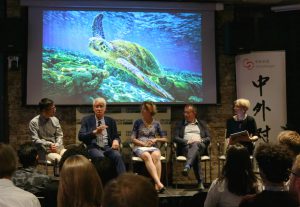

![Two fishermen on the Brahmaputra, a river that winds through four countries [image by: Sumit Vij]](https://dialogue.earth/content/uploads/2018/04/Brahmaputra-300x200.jpg)
